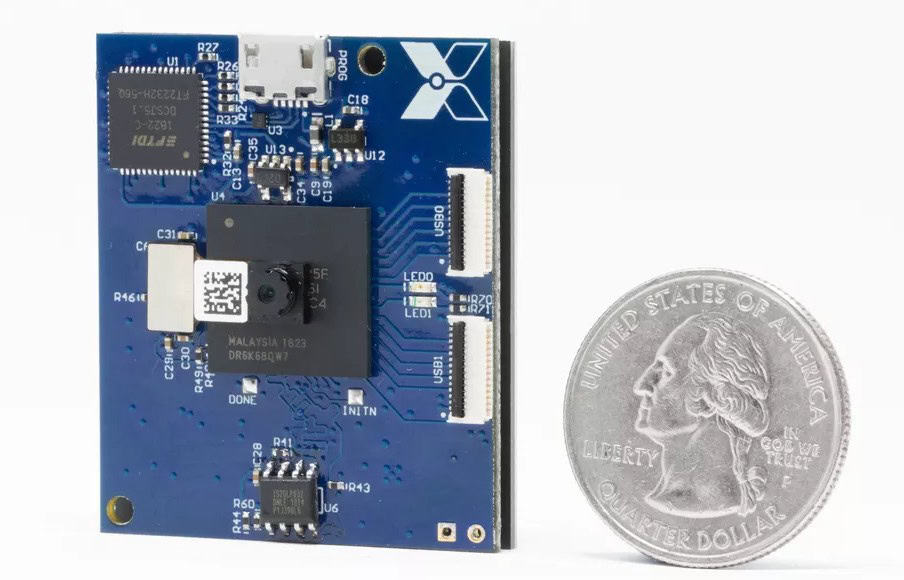
A big trend in AI is the transition from cloud to edge computing. Instead of AI devices doing their computation remotely via an internet connection, they’re increasingly handling things locally, with algorithms working directly on-device. Benefits of this approach can include faster results, greater security, and more flexibility. But how far can you push this model?
Seattle-based startup Xnor is certainly right at the bleeding-edge. This week the company unveiled a prototype AI camera that runs entirely off solar power — no battery or external power source required. The camera has a piddling 320 x 320 resolution, an FGPA chip to handle processing, and is loaded with a state of the art object recognition algorithm.
You could, theoretically, stick a device like this anywhere outdoors and have it transmit data back to you indefinitely. It’s compatible with a few different low-energy wireless communication protocols (because Wi-Fi drains too much battery) which let it send information over tens of kilometers. And, says Xnor, if you fit it with a battery, it can store enough power during the day to keep it running during low-sunlight hours and at night.
“We’re investigating several use-cases for these devices right now,” Mohammad Rastegari, Xnor’s CTO, tells The Verge. “From large-scale civilian projects, to monitoring inside the cabins of autonomous cars, to attaching cameras to drones.”
Xnor has a strong background in this sort of AI miniaturization. It was spun off from the Allen Institute for Artificial Intelligence back in 2017 on the back of a proprietary method for creating super-efficient machine learning systems. (Key to this technology is a type of logic circuit known as an XNOR gate, hence the name.) It’s also proved the utility of its software by running them on low-power, low-compute devices like the Raspberry Pi Zero.
This solar-powered AI camera is not yet ready to sell though. Although it’s entirely self-contained, there are some constraints on its operation. For example, the amount of frames it can process each second depends on how much sun it’s getting. Xnor says that on a sunny day it runs at 32fps, but this can be compensated for with bigger solar cells.
What’s clear is that devices like this are only going to become more common in the future. They’re relatively cheap (Xnor’s model costs $10), and more convenient for operators. And, as the photos and videos they take never leave the device, they’re potentially more private.
But a question remains: are we comfortable with a world full of AI eyes that are always watching? It’s a problem we’re already grappling with in the context of smart CCTV, and as Xnor’s work shows, the technology is only going to get smaller and more unobtrusive.
